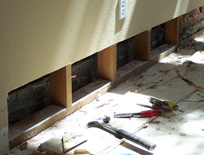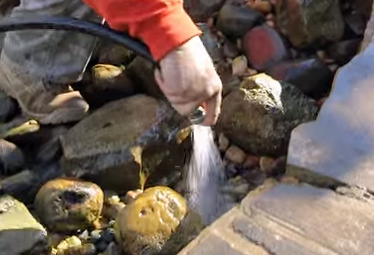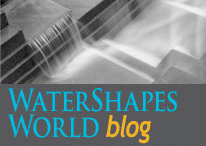ARTICLES
Advance Search
Aquatic Health
Aquatic Health, Fitness & Safety
Around the Internet
Aquatic Culture
Aquatic Technology
Artful Endeavors
Celebrity Corner
Life Aquatic
Must-See Watershapes
People with Cameras
Watershapes in the Headlines
Art/Architectural History
Book & Media Reviews
Commentaries, Interviews & Profiles
Concrete Science
Environment
Fountains
Geotechnical
Join the Dialogue
Landscape, Plants, Hardscape & Decks
Lighter Side
Ripples
Test Your Knowledge
The Aquatic Quiz
Other Waterfeatures (from birdbaths to lakes)
Outdoor Living, Fire Features, Amenities & Lighting
Plants
Ponds, Streams & Waterfalls
Pools & Spas
Professional Watershaping
Structures (Editor's Notes)
Travelogues & History
Water Chemistry
WaterShapes TV
WaterShapes World Blog
Web Links
Around the Internet
Aquatic Culture
Aquatic Technology
Artful Endeavors
Celebrity Corner
Life Aquatic
Must-See Watershapes
People with Cameras
Watershapes in the Headlines
In most backyard swimming pool projects, we install the drainage systems for decks after the swimming pool's plumbing, basically because the pool plumbers use big trenchers that will likely destroy the small drainage plumbing if
Of all the tasks involved in giving a good-size pond a thorough spring cleaning, taking care of the fish is the biggest concern and, frankly, the riskiest part of the operation. It's not simply a matter of chasing them around the pond and cramming them into a net before unceremoniously dumping them in a garbage can: If the job is approached with that cruel and misguided spirit, it's fully possible that the fish and other aquatic wildlife will show their appreciation by
When the management at Longwood Gardens announced in late 2014 that the Main Fountain Garden would be taken offline and become the subject of a $90 million restoration project, anyone who has ever visited the gardens had to be happy. I've been a regular visitor and huge fan of the Longwood for most of my life, and it's been sad through the years to watch various systems break down and the overall performance of what was left gradually
'If there's one thing about the watershaping world that continuously drives me crazy,' wrote David Tisherman in his Details column in March 2006, 'it's the existence and persistence of a sub-professional mindset that says creative designs and affluent clients deserve one set of standards, while projects with more affordable designs can acceptably be built to another, less stringent set of standards. 'To me, middle-class clients who've commissioned modest projects
The lengthy headline atop the news item definitely made the story worth a look. It read: "Couple blow £4,000 on two-year legal battle with neighbour over his 'noisy' water feature, which they claim makes them need the loo." The article appeared February 16 in the online version of the Daily Mail, a U.K.-based publication known for sensational headlines up top with detailed text below that doesn't always
In recent years, it's been difficult to avoid two large and related discussions about water treatment as it relates to swimming pools and spas. One the one hand are discussions of the evils of chlorine, which, after more than a century of common and beneficial use, is still widely misunderstood by homeowners and many professionals in the watershaping trades. On the other are conversations about chlorine-free pools and spas - another set of exchanges where there's proving to be
& William Drakeley The years after the Second World War were times of opportunity and awkwardness in the shotcrete business. From 1920 until the early 1950s, the Cement Gun Co. owned the trademark to "gunite" and established an aggressive licensing/franchising system to maintain as much control as it could over the process and profit from it to the greatest possible degree. By 1952, however - and apparently with
by jim mccloskey
No matter whether it's for business or pleasure, I'm always open to the history of a place when I travel: It helps me put what I'm seeing in context and enriches my understanding of how things have come to be - and why they endure. In trips to Europe, for example, you often come across small, nondescript public fountains, usually in the oldest parts of cities from London to Paris to Rome. In several cases, my curiosity about them has led me to do a bit of research.
As it turns out, most of these modest fountains were set up originally to supply the general populace with fresh, safe water for drinking, cooking, bathing and many other uses besides. And some of them date back 2,000 years and more to the Roman era, when water systems and aqueducts were built throughout the empire and hydraulic engineers used head pressure and gravity to keep Rome's far-flung outposts going.
Some are little more than spouts dribbling out of wall sconces or from plain, blocky structures in public squares - and on several levels I find myself preferring them to the gaudier expressions of watershaping that garner far more attention, including Rome's Trevi Fountain, the Fountains of Versailles outside Paris and countless other water displays that are more about decoration (or ostentation) than they are about functionality.
Among my favorite examples on the purely functional end of the spectrum is the one seen in the accompanying photographs: It is Il Facchino ("The Porter"), a tiny wall fountain I saw on the Via Corso in Rome many years ago. Sculpted around 1580 (apparently by the artist Jacopo del Conte, although some have claimed it is actually the work of Michelangelo, which would really be something special), it was set up as an outlet for a restored Roman aqueduct that had been inoperable for centuries before various Popes started investing in Rome's infrastructure. (The fountain was moved a short distance to its current location on a palace wall in 1874.)
In the period before the aqueducts were returned to service, it had been the job of porters such as this nose-free fellow to fetch and deliver water from the Tiber River to Rome's citizenry, making the sculpture's purpose a neatly ironic statement on what was becoming an outmoded job description. But what is really cool about this fountain - beyond its imperial roots, Michelangelo possibilities and the wicked irony - is the fact that this is one of five of Rome's so-called pasquinades, or "talking statues."
It seems that witty citizens of Renaissance Rome once poked fun at the city's administrators or commented satirically on affairs of the day by posting placards or pamphlets on or around these five fountains and, for whatever reason, only these five fountains. Copies of the lampoons would be made and the information disseminated widely - a sort of 16th-century version of The Onion combined with Facebook.
This is why I so enjoy doing my homework on watershapes such as Il Facchino: It's cool enough that this fountain was a key public utility in what was then (as now) one of the world's most populous cities, but to think of it being a billboard for blasphemies great and small makes it even more appealing.
Perhaps this history explains why the poor porter is so unfortunately absent his nose?
'You'd think that having lousy-looking deck drains was inescapable, given that about 99.9% of them look like a thing you'd find in your shower.' That's how David Tisherman launched into his Details column in the January/February issue of WaterShapes 15 years ago, and he didn't mince many words thereafter. 'Whether you're using PVC or brass grates, they disrupt the surface of any decking material and to my way of thinking are
Why don't more of us know how to swim? As I've discussed in several of my blogs through the past few months, I'm a firm believer that everyone should master this basic and essential survival skill. As fervently, I believe that encouraging comfort in and around water is the key to watershaping's future: Without it, why





















